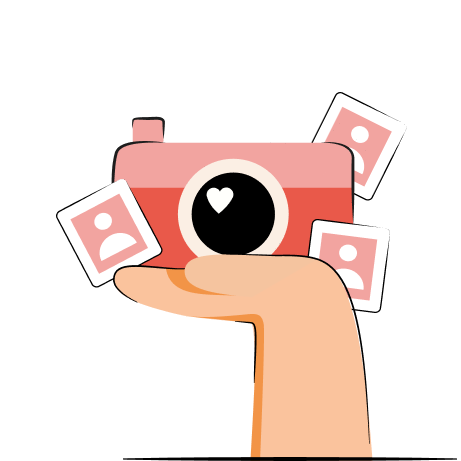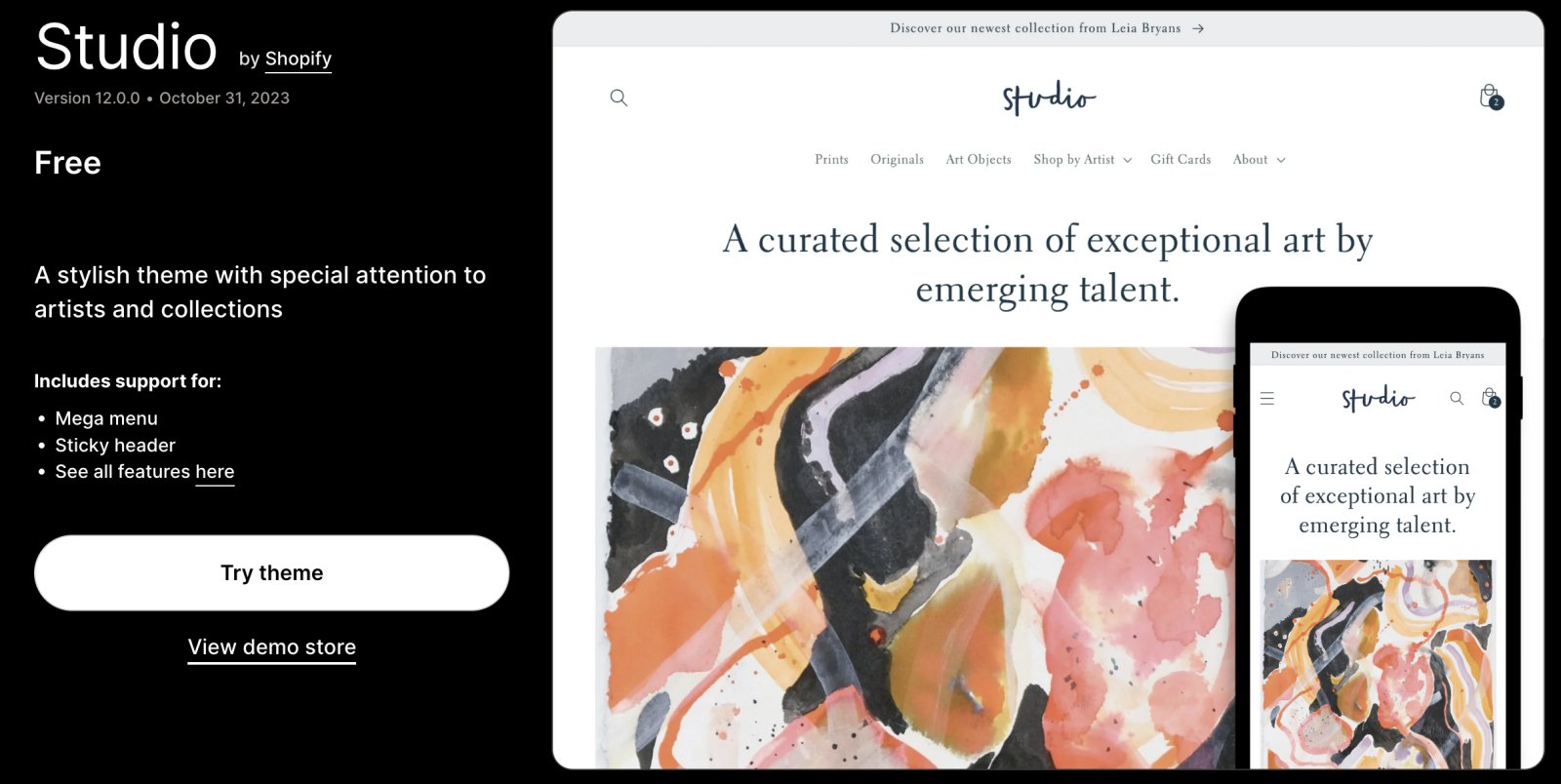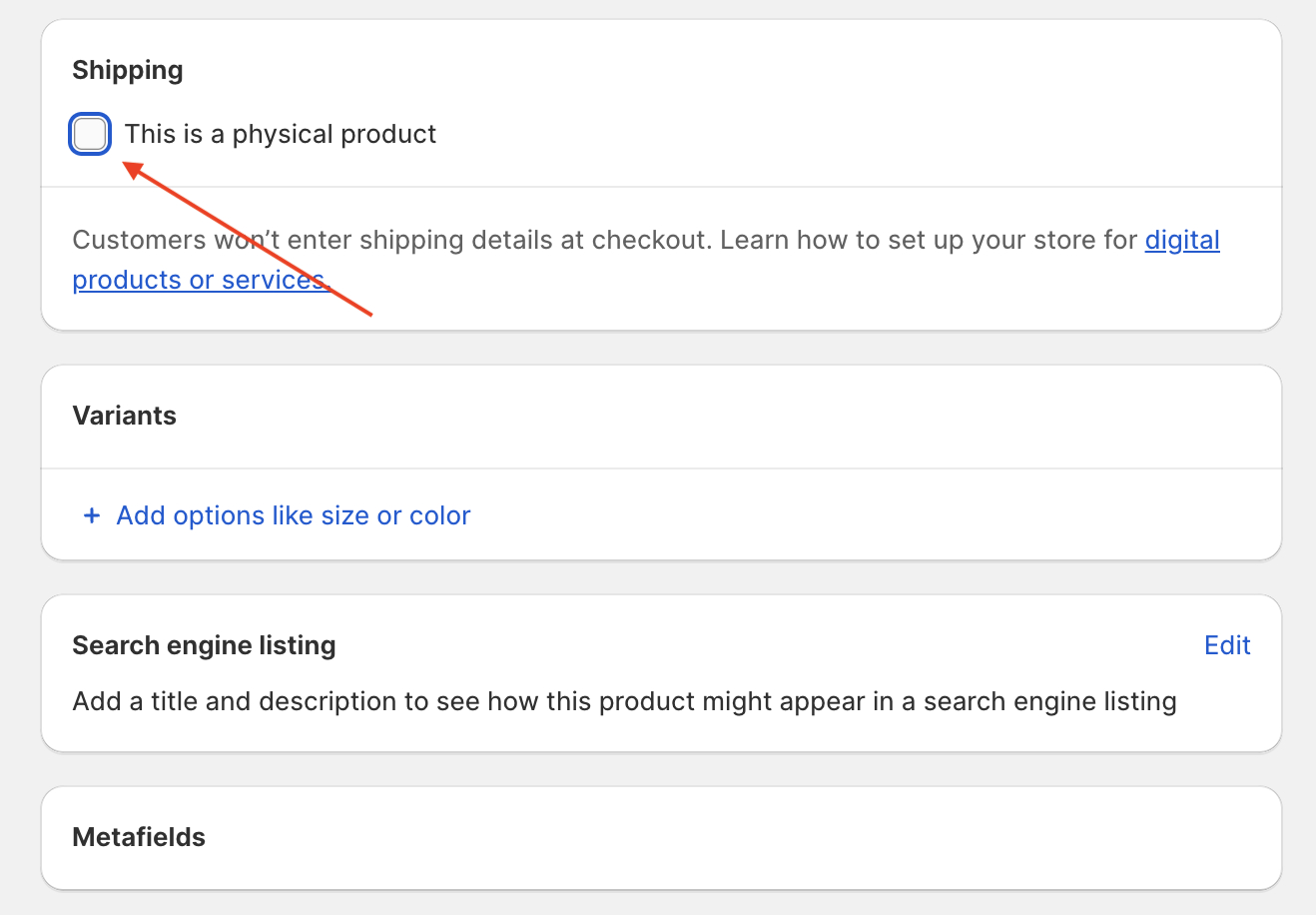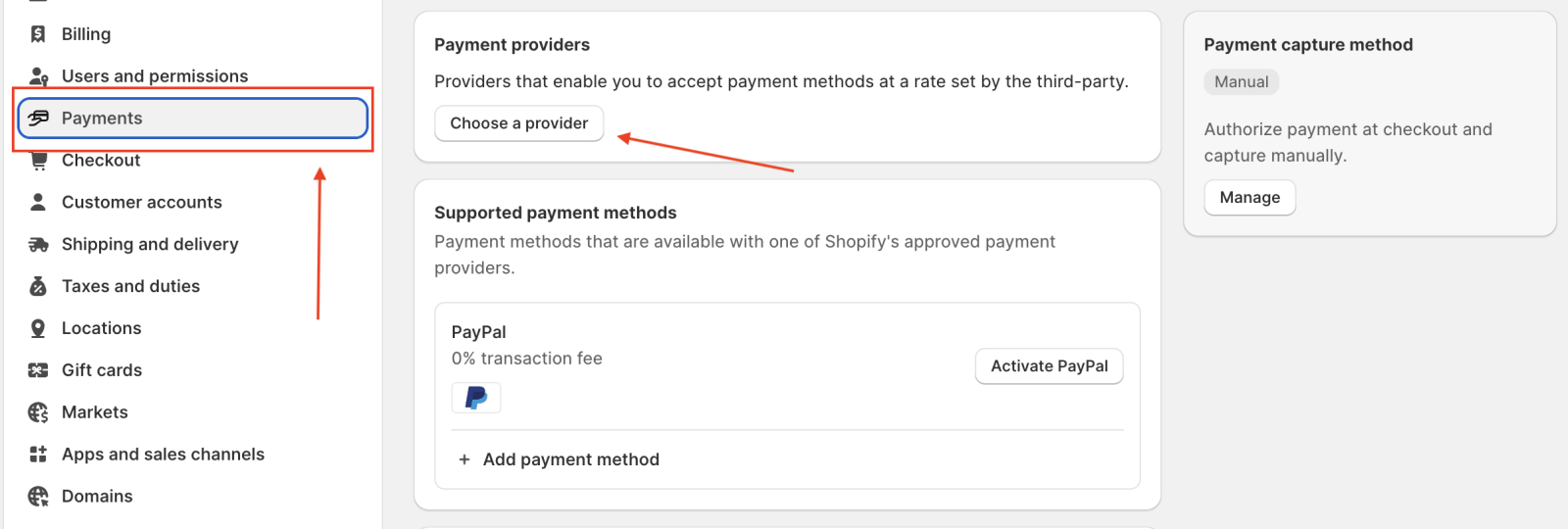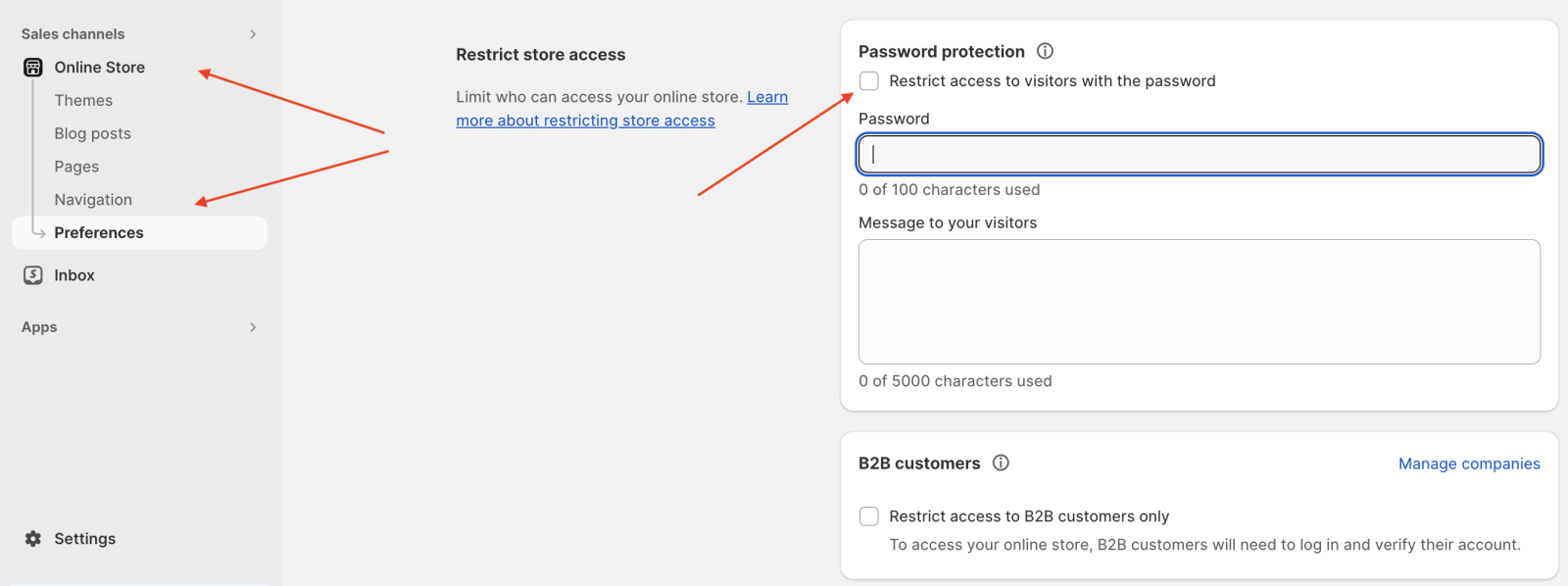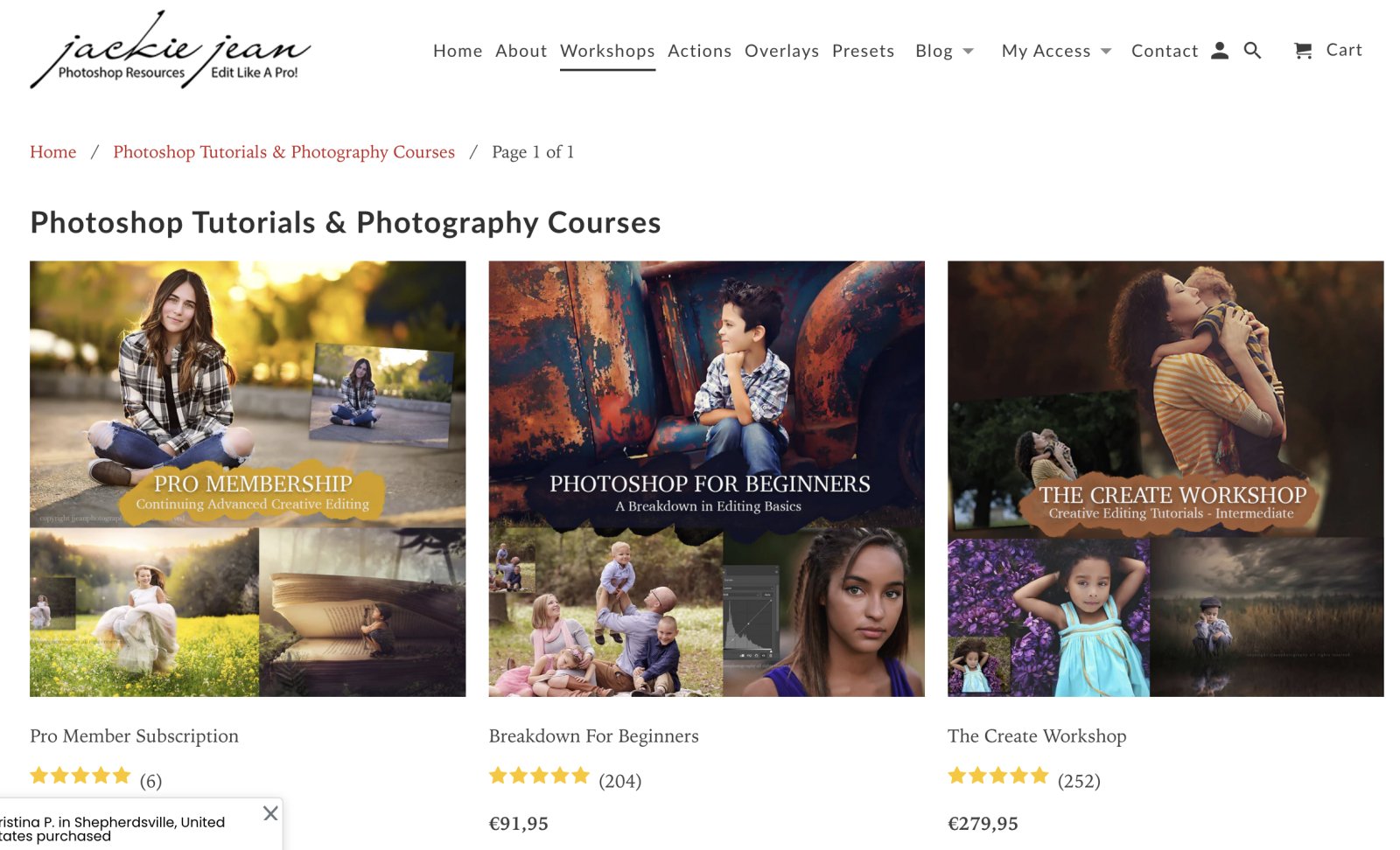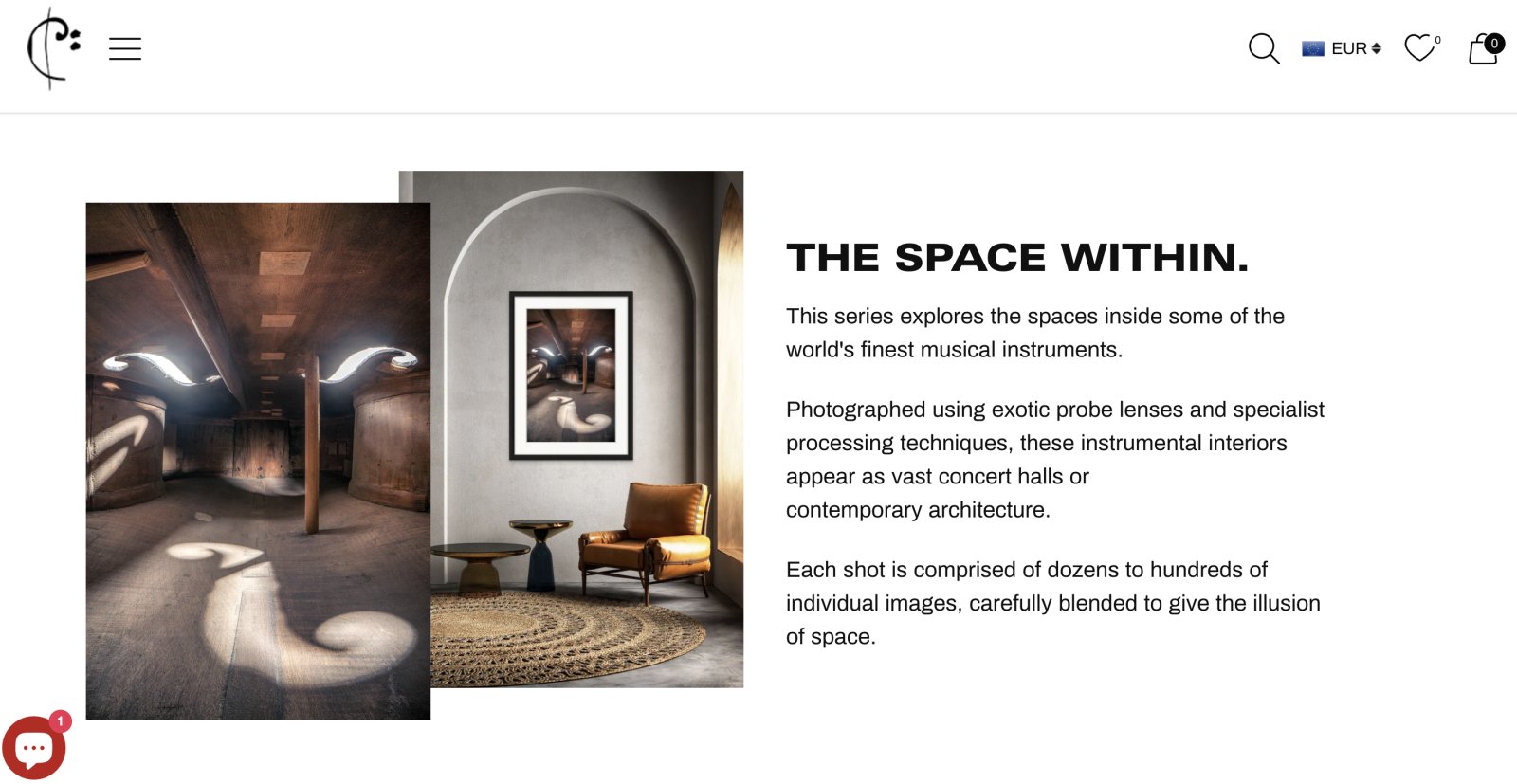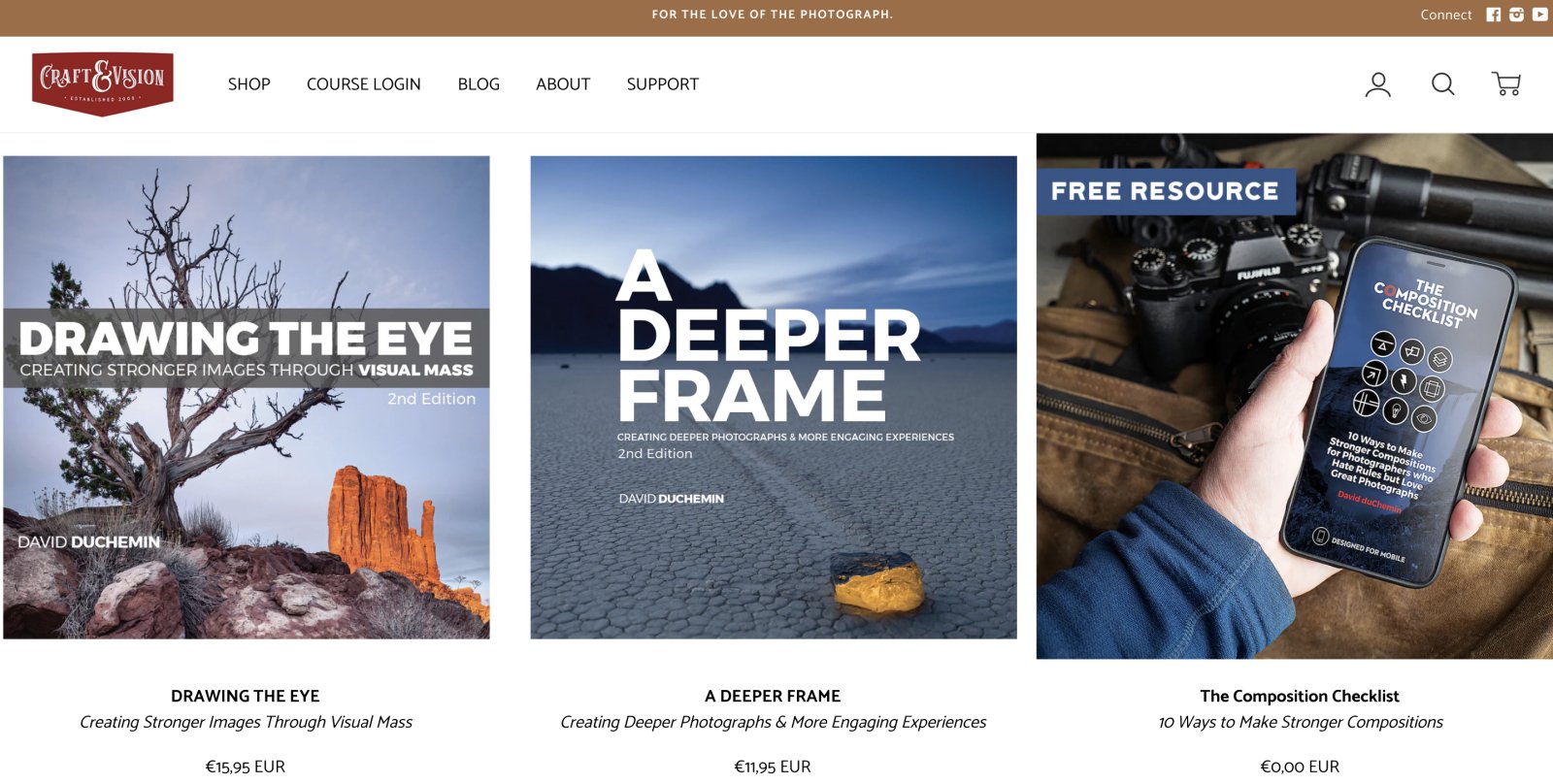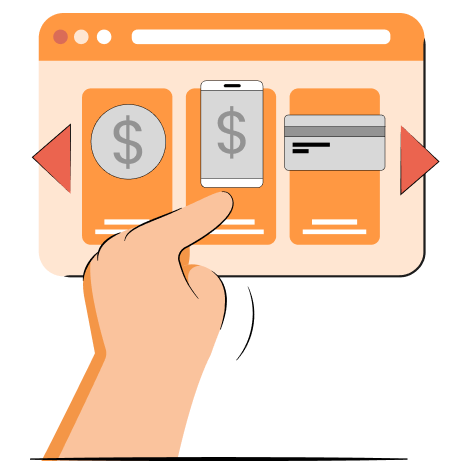Mainly known as an e-commerce platform to sell physical items, Shopify is also a convenient option for photographers who want to sell their stock photos online. Although it’s been popular among artists for a while now, there’s still the main question hanging – does the platform suit the needs of a photographer to the fullest extent?
There’s no right or wrong answer to this question. However, some facts make Shopify excellent for selling visual art online. The platform has reliable built-in features for marketing, SEO, and blogging. It’s an easy-to-use website builder that boasts impressive scalability due to its extensive app store.
To answer your question more extensively, we have broken it into several separate discussions, analyzing what makes Shopify a suitable platform for photographers, as well as ways and tips for making money with photography there. Additionally, you will find the best Shopify photography store examples for inspiration.
Is Shopify good for photographers?
Yes, Shopify can be a good platform for photographers who are looking for an easy but professional way to showcase and sell their work online. This website builder is widely popular among beginners due to its intuitive drag-and-drop editor. And it may also suit even the most subtle design needs, as it offers over a thousand free and paid customizable themes.
Below, we have compiled a list of Shopify’s strengths and weaknesses when considering it as an e-commerce platform for photographers:
Shopify for photographers: Pros
- Customizable themes. Shopify offers an impressive library of themes that can be customizable according to every photographer’s needs.
- Works on all screens. Shopify themes are fully responsive, meaning your photography website will look excellent on all screens, including computers, tablets, and mobile devices.
- Intuitive store management. With Shopify, you will be able to manage your products effortlessly, as the platform offers a straightforward management system.
- High-resolution images. Shopify supports high-quality image uploads and helps you showcase your photography portfolio professionally.
- Optimized for SEO. To help you stay visible online and continuously attract organic traffic, Shopify offers a set of robust SEO features.
- Enormous Shopify app store. The platform is unmatchable in terms of the app store; there, you can find numerous must-have Shopify applications that will help you manage your sales, improve marketing, or showcase photography even in a more tasteful way.
- POD opportunities. Shopify is one of the top platforms for selling print-on-demand items; hence, you will be able to sell printed photographs without taking care of inventory or shipping.
- Flexible payment options. Shopify supports all popular payment options, making it easy for your customers to purchase your art.
Shopify for photographers: Cons
- Dependency on third-party apps. Although we love how extensive the Shopify app store is, it’s undeniable that having to install different applications to expand the platform’s functionality can be both expensive and uncomfortable.
- Limited blogging capabilities. Yes, Shopify does have blogging features; however, they aren’t as advanced as they would be with a dedicated blogging platform. Hence, it may be complicated to speak of your photography to your customers using blogs.
- Mandatory transaction fees. If you’re planning to use external payment methods instead of the ones that Shopify offers, you should bear in mind that there will be transaction fees applied.
- No free subscription plan. If Shopify is your first e-commerce platform and you want to see how everything works in the first place, then it can get complicated, as Shopify has only a 3-day free trial and no free version.
How to make money with photography on Shopify?
Shopify is among the best e-commerce platforms for photographers and artists overall. Therefore, there are multiple ways to make money with photography on Shopify. For example, you can sell your photos and photography services or even use your photography for a print-on-demand business model. Continue reading below to learn more about each method:
Sell photos on Shopify
Selling photos on Shopify, just like selling other digital products there, is easy. You don’t need to take care of inventory, shipping, or returns. Moreover, you can set high profit margins and enjoy noticeably increasing income after each sold piece of art.
However, keep in mind that the online photography market is considerably competitive. Therefore, your Shopify store needs to be authentic, eye-catching, and visible online. One of the most important tasks of succeeding in selling photos on Shopify is ensuring your website is well-optimized for the search engines, avoiding the most common SEO mistakes.
Sell photography services
While Shopify is known as a leading e-commerce platform tailored for selling physical products, its capabilities extend beyond this scope. For instance, you can sell services on Shopify. This means that you can also offer your photography service as a product catering to special occasions, corporate needs, fashion ventures, individual photoshoots, and more.
Likewise, Shopify works for selling courses. So, if you have a baggage of knowledge about photography that you want to share with the audience, you can start selling courses or workshops online and monetize your experience. But keep in mind that even though Shopify apps make it easy to sell courses online, you still need to analyze your audience and properly prepare the course so it sells.
Use photos for POD
Print-on-demand (POD) is a way to sell on Shopify without having an inventory. It’s also an effective way to make extra income from your photography. You can apply your pictures on various items, including clothing or homeware, as well as make simple prints.
By selling your photography using the POD method, you don’t need to worry about the order packaging, shipping, and other aspects. As a store owner, you’d only need to choose a reliable supplier for the prints, and, naturally, take care of the web store itself, ensuring your Shopify sales are increasing.
How to set up a photography website on Shopify?
Selling photos or photography courses on Shopify is a fantastic way of monetizing your knowledge and experience. What’s also great is that setting up a photography website on Shopify is one of the easiest parts of starting the business.
Without further ado, continue reading, and learn how to set up a photography website on Shopify:
1. Create your Shopify account
The first thing you need to do is to head to the official Shopify website. There, you will be prompted with the 3-day free trial suggestion, which you can obtain by entering your email address.
Instead of this short free trial, you may also choose one of the Shopify premium plans and pay only $1/month for any selected subscription for the whole three months.
After you go with a free trial or a premium subscription, you will receive a series of questions describing you as a user. For instance, you will be asked how advanced you are in selling your products either physically or online.
Once you finish these questions, choose the country where your business will be located and set up the authentication method. Then, you will move on to the core part of setting up a Shopify store.
2. Choose a Shopify theme
Shopify is abundant with themes suitable for photographers; therefore, the question here is only about whether you can choose the one that’s the best for your brand. However, no matter what your needs are, it’s crucial to take some time selecting a theme, considering these factors:
- How clean and modern the design of a theme is
- If the theme is customizable
- What extra features come with the theme
Following the criteria listed above, we found that the best three Shopify themes for photographers are Motion, Studio, and Exhibit. They offer smooth animations, intuitive navigation, and flexible customization possibilities.
However, if you don't like any of the provided Shopify themes, you can also get help from the Shopify page builders and create custom designs to represent your brand to the fullest extent. With them, not only can you adjust the look of a theme but also add advanced features such as speed-up tools.
3. Create main pages
No matter what type of online store or business website is being built, some pages shouldn’t be skipped. The website pages listed and described below serve the function of presenting your business to site visitors and search engines as well.
- About Us page. When building the About Us section, also known as, Our Story page, you as a photographer should tell your visitor the story and vision of your photography business. Here, you need to stay authentic and build an emotional but reliable bond with the reader.
- Contact Us page. Whether you’re planning to sell your pictures, photography services, or prints, there will always be customers who have questions to ask before placing an order. Hence, ensure you build the Contact Us page with accurate references for getting in touch with you.
- FAQ page. The Frequently Asked Questions page is an excellent customer support alternative for your customers, allowing them to get quick and accurate answers about your business. Moreover, the FAQ answers increase the chances of getting feature snippets and boosting the rank in the search engine’s result page.
- Business policy page. This type of website page often includes terms of service, privacy policy, and other provisions. With them, you insure yourself as a merchant and your customers from unexpected issues due to miscommunication.
4. Add products and collections
Unlike selling physical items, selling photos on Shopify requires you to take fewer steps than usual. However, the beginning is the same for everyone – you need to navigate to your Shopify Admin.
From there, you can find the Products section on the left-side menu bar and choose the Add product option, found on the right-side corner of the page. Once the new page opens, you need to fill in all the necessary information and uncheck certain boxes that apply to physical items, for example, in the shipping section.
If you want to create the whole photography collection, you’d need to choose the Collections option under the Products category on the left-side menu bar and then proceed as provided above.
5. Optimize your photos
Optimizing images involves compressing and resizing them without compromising quality, ensuring a seamless user experience, and enhancing search engine rankings. But to put it simply, product photo size in Shopify is important if you want to be visible online and make sales.
Aside from the image size, optimizing photos includes the incorporation of another 6 crucial steps, including:
- Using the right file format
- Writing well-optimized alt attributes
- Applying the right file name
- Ensuring the photos are responsive
- Creating image sitemaps
- Testing and adjusting images
Luckily, multiple tasks can be completed with the help of reputable Shopify image optimization applications like TinyIMG. With it, you won’t need to bother yourself about image compression, converting file formats, or writing converting alt texts.
6. Install necessary plugins
Shopify offers one of the most impressive libraries of plugins for its users. There, you can find tools for theme customizations, SEO optimizations, marketing, and customer support integrations, among other fields.
However, after going through numerous tests and setting up a trial photography website, we found that these types of Shopify applications were the most beneficial:
- SEO. Visibility in search engine result pages is one of the most critical aspects of receiving traffic to your website. With Shopify SEO apps, like TinyIMG, you receive automated features for increasing page speed, improving metadata, fixing broken links, and more.
- Marketing. These apps add up to broadly showcasing your online photography business and compelling your customers with effective commercials which lead to increasing sales.
- Image optimization. Compressing your photos and giving the right alt attributes impacts your website’s performance against competitors and ensures a good customer experience. Using an app to optimize images can help you retain high image quality and use strong keywords in alt texts.
- Page builder. With dedicated apps for building pages, you can make your photography website stand out from the competitors and represent your brand the way you want it. These apps offer more customization possibilities than the built-in Shopify editor.
- Gift cards. Implementing gift cards to your Shopify photography website is another effective way of motivating your customers to recommend your brand to others.
7. Set up payment gateways
Shopify works with both built-in and over 100 external payment methods. To set up your payment gateways, you’d need to detect the Settings section on your Shopify Admin homepage and then choose the Payments category, where you will be able to continue the process.
However, note that only with a built-in Shopify payment method you won’t have to pay fees, unlike with other globally used payment getaways (Square, PayPal, Stripe). Even though this may seem frustrating at first glance, not using additional payment methods may affect your sales. Working with popular payment gateways increases the chance of having a global customer base.
8. Buy a custom domain
Having a name for your Shopify photography website isn’t the same as having a domain name. This means that there’s some more work to do, which is choosing between a Shopify-given domain by default or buying a custom domain from third-party providers like Hostinger.
Even though using a default domain may seem an easier and quicker way to go, choosing a custom domain name can help you make your website look more legitimate. Moreover, a personalized domain noticeably adds up to an effective marketing strategy.
When creating a domain name, make sure it’s straightforward, catchy, and memorable. With time, powerful link-building and quality content accumulation will also help your domain name become authoritative.
9. Launch your photography website
Once you feel like every preparation step for launching your photography website is completed, we recommend you preview your website once more. Only then head to your Shopify Admin, select the Online Store section in the left-side menu bar, and choose the Preferences category, where you will remove the store password protection.
After it’s done, you can begin selling your photography!
Nevertheless, bear in mind that maintaining a Shopify store requires you to regularly monitor its performance and make adjustments for continuous improvement against your competitors.
Shopify website tips for photographers
Before you dive into setting up your Shopify photography website, make a rewind with these dedicated tips for you:
- Sell photos only made by you. If you sell third-party images, there’s a chance of arising issues due to copyright laws as well as more severe competition on the market. Hence, it’s best to sell photographs taken by you that are suitable for your targeted audience and express your authenticity.
- Protect your work. Just like you could use someone else’s artwork, the same could be done to you. Therefore, you should protect your photographs by registering the copyright, watermarking your work, using a digital signature, and other ways.
- Optimize for SEO. A Shopify website that’s well-optimized for SEO can outrank its competitors and enjoy growing sales. To ensure your SEO is powerful, you must write engaging metadata, use the correct keywords, correctly answer the search intent, and more. Bust most importantly you need to ensure your pages load fast by optimizing your images and other aspects.
- Promote your website on social media. With people spending severely more time on social media, promoting your business there is crucial. To make things easier, you can use dedicated Shopify social media apps.
- Empower email marketing. Even though you’re most likely selling digital artwork, you should still aim for a loyal customer base. And the best way to go there is through email marketing. Use Shopify email marketing apps, collect contacts, and keep your audience updated.
- Optimize the conversion rate. To encourage more customers to complete desired actions on your website, it's essential to have a compelling homepage, a landing page featuring enticing bonuses, a blog with effective calls-to-action (CTA), and additional strategies for optimizing the conversion rate.
Shopify photography store examples
Selling artwork without going online is becoming nearly impossible. That’s why numerous photography professionals and enthusiasts have begun selling their pictures or services using Shopify or other e-commerce platforms. Yet, not all of them are equally successful.
We have picked the best photography store examples so you can learn the correct curve of strategy:
Jackie Jean Photoshop Resources
We have told you about photographers monetizing their knowledge, right? Well, Jackie Jean Photoshop Resources is a perfect example of that.
The artist has found several ways to earn money from her experience – by selling Photoshop workshops, photography courses, Photoshop presets and overlays, as well as Photoshop actions.
The website runs on the Retina theme, which gives a simplistic look to the brand. Nevertheless, it also has the PageFly plugin installed, so we can guess that there have been custom design and functionality changes made. Speaking of plugins, the website owner also uses Loox for product reviews, AdRoll for marketing, Facebook & Instagram social media app, and more.
Architecture In Music.
This is one of the most tasteful and professional Shopify photography websites we have seen so far. Architecture In Music. combines two types of art and sells superb quality prints of various instruments.
Here, the customers can even choose whether they want acrylic, aluminum, poster, museum quality, or other print types.
The store runs on the Stable theme, which has been enhanced using the PageFly page builder. Since the artist sells various types of photography prints, it also works with Gelato – a reliable print-on-demand application. You can also spot the live chat app integration for customer support, not to mention other plugins.
Craft & Vision
Another educational Shopify photography website worth your attention is Craft & Vision.
Here, the artist shares his knowledge through online courses as well as through eBooks.
To join a photography course, the customer needs to purchase access to it and receive certain login details. As for traffic flow, the photographer writes weekly blog posts that are both shared on the website and sent to the subscribers via their emails.
Initially, the website was built using the Ira theme; however, to represent the brand even more authentically, the website owner is using the PageFly page builder app. Similarly to other reviewed examples, it also has the Loox plugin for reviews, as well as apps for social media integrations, product bundling, and customer support.

